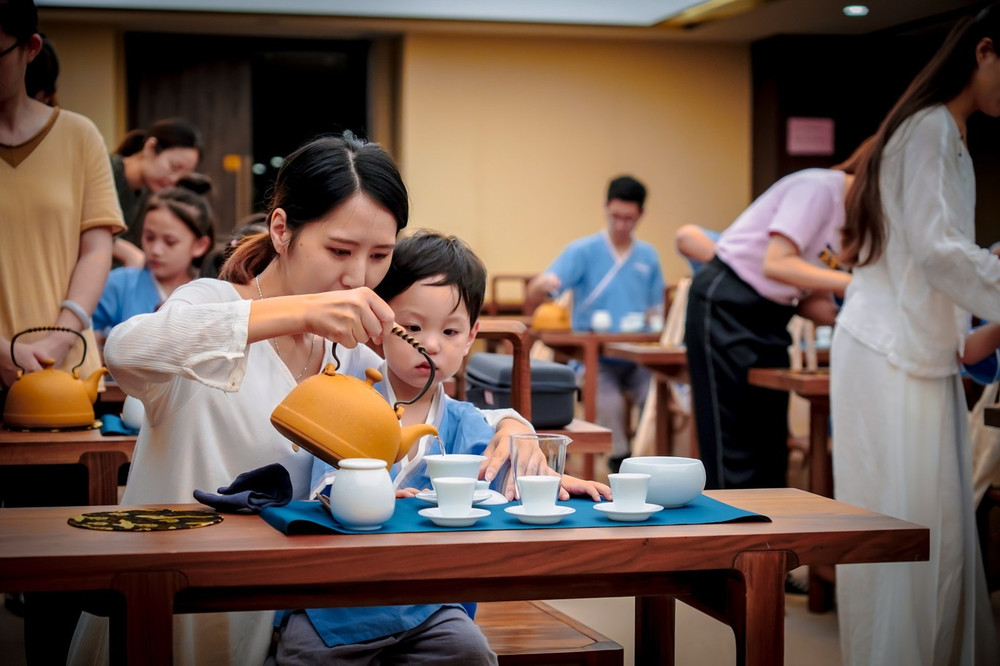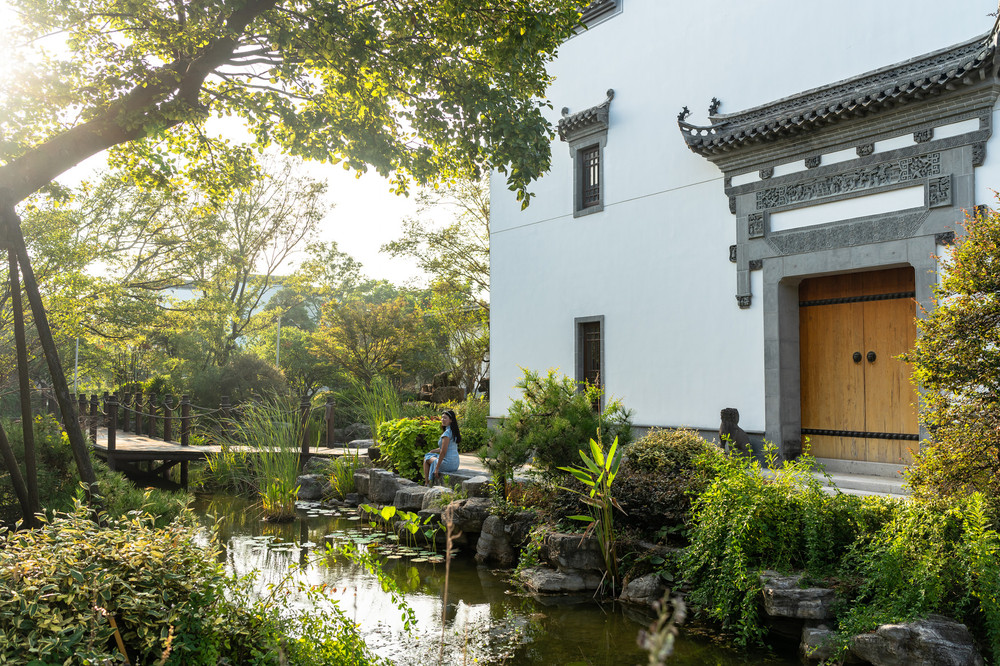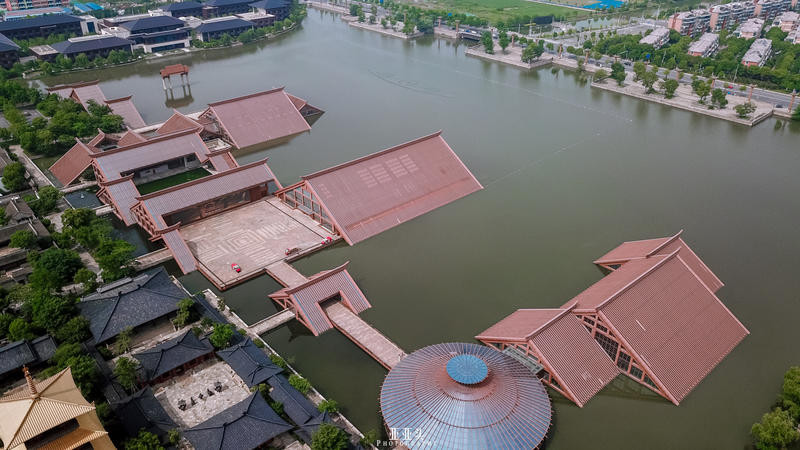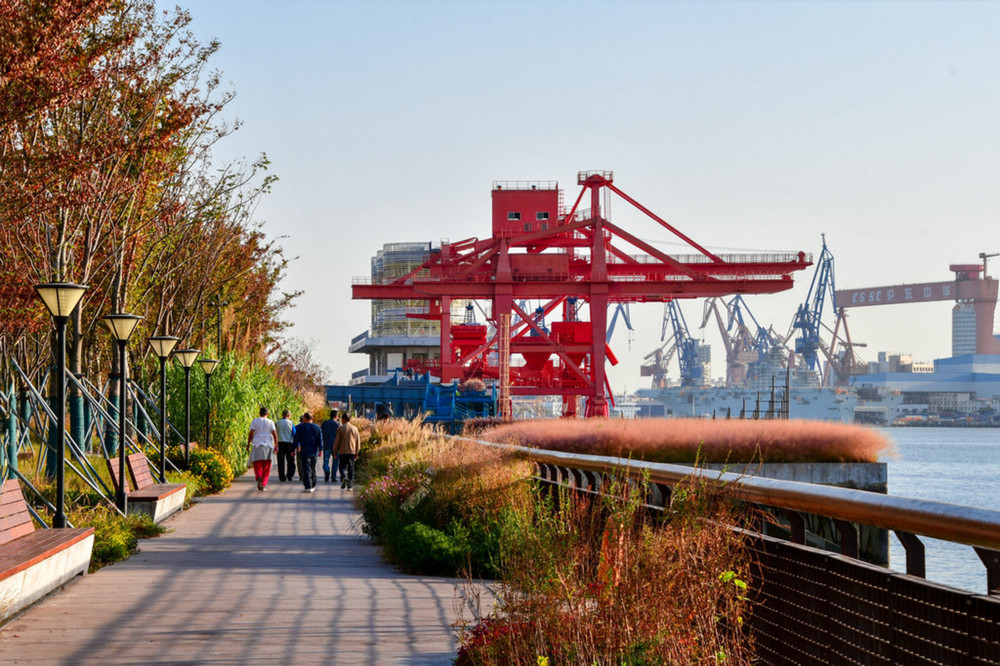Duration: 1 day. Per capita cost: 50 yuan. With whom: Friends. Ways of playing: Photography, self-driving, independent travel, budget travel. Posted on June 8, 2021, at 08:05.

‘Yunjian Granary’ gets its name from the alias of Songjiang, ‘Yunjian’. It was originally a grain warehouse and factory built on this land successively from the 1950s to the 1990s. From the South Gate Grain Depot, Songjiang Rice Mill to Songjiang Flour Mill, etc., these old granaries have witnessed the development and evolution of the grain and oil industry in Songjiang, Shanghai since the founding of New China. Now, this land, which carries the memories of many old Songjiang people and profound humanistic and historical background, is rejuvenating. Yunjian Granary has turned into a cultural and creative industrial park.
The east gate of Yunjian Granary is located at No. 10053, Songjin Road, Songjiang District, Shanghai. Yunjian Granary, covering an area of 136 mu, has 68 buildings with a construction area of nearly 40,000 square meters. There are many special historical and cultural memories preserved here. The representative work of Xu Guangqi in the late Ming Dynasty, ‘Complete Treatise on Agricultural Administration’, was printed here. In 1705 and 1707, Emperor Kangxi arrived here by boat twice and hunted with arrows. The stele inscription of ‘The Stele Inscription for the Restoration of Puzhao Temple’ engraved in 1894 was unearthed in Yunjian Granary. In the 1950s, the ‘South Gate Grain Depot’ was completed here. Subsequently, rice mills, flour mills, feed mills, etc. were born, witnessing the development and evolution of the grain industry in Songjiang since the founding of New China.
Entering the Yunjian Granary park, the first thing you see is this installation placed on the threshing ground. The name of this installation is ‘Sing for You’. It is a ‘new public art’ work created by Chinese artist Zheng Bo. As an exhibited work of the 11th Shanghai Biennale hosted by the Power Station of Art (PSA), it was once exhibited at the Hong Kong Cultural Centre. This installation is manifested as a giant iron horn with a size of 11.4 meters in length, 5.8 meters in width, and 6 meters in height. It organically combines public sculpture with technology and conveys the concept of diversity and communication, adding a strong artistic atmosphere to the Yunjian Granary park.
At the entrance of the park, you can see two rows of ordinary bungalows. After walking in, you will find that the windows are filled with wine bottles. This is the Aunt Beer Museum. Standing on the spacious threshing ground of the granary, you can see the red tiles and blue tiles left by the original building piecing together scientific and technological and cultural elements on the roof, such as the roof mosaics of Einstein and Marie Curie.
Entering the largest threshing ground of the granary, on the huge wall in the farthest distance, there is an artistic graffiti of ‘Ten deer, nine turn back’. Czech double-roof granary. Red bricks, red tiles, mottled walls, and old doors and windows… Looking around, there is the vicissitudes of history. The strong dilapidated factory style, combined with graffiti, gives a very unique feeling.
The People’s River landscape road has rows of trees on one side and Soviet-style granary buildings on the other. At the site of the simple granary (bungalow granary), from 1975 to 1983, the main granary type of the grain depot was the bungalow granary. The brick walls bear the load, with a concrete floor. The grain storage height is 3-3.5 meters. The main roof structures adopted are: reinforced concrete composite roof trusses, reinforced concrete portal frames, prestressed reinforced concrete arch slab roofs, etc.
The decoration design of the entire park follows the structure of the old factory, without excessive decoration. It is very retro and retains the factory style of the 1950s and 1960s. You can easily take great photos anywhere.
Yunjian Granary once had a stele engraved in 1894 (the 20th year of Guangxu). ‘Stele Inscription for the Reconstruction of Puzhao Temple’ was written by Yuan Chang, a famous scholar in the late Qing Dynasty. It is made of bluestone, 138 centimeters in length, 71 centimeters in width, and 18 centimeters in
—
Soviet-Style Granaries in Songjiang: A Historical Perspective
These Soviet-style granaries, built along the river, were pivotal for centralized grain storage and transportation in the Songjiang area following the establishment of the People’s Republic of China. The sheer number and volume of these structures, as preserved, testify to their grand scale of yesteryears. Their distinctive shapes are a testament to the history of emulating Soviet industrial and agricultural construction in the early days of New China, and they hold significant scientific research value.
Hidden in Plain Sight: The Role of Granaries
Over the past decades, granaries and grain depots have been crucial yet largely unseen by the public. The individuals managing these facilities remain largely unknown. The red handwriting on the grayish-white walls has faded with time, making it rare and precious, contrasting sharply with the mottled exterior of the granaries.
Mechanical Marvels of the Past
Beneath the granaries lies a long iron plate, a truck scale specifically designed for these facilities. Before grain is stored, it undergoes rigorous quality checks and precise weighing. A preserved mechanical device, the gravity separator and specific gravity sorter, stands majestically on Yunjian Avenue. This device is a marvel of engineering, integrating an ultra-low-speed non-crushing elevator, a vertical air sieve, a cyclone dust removal system, a large-area specific gravity table, and a vibrating grading sieve.
The Transformation: From Granaries to Cultural Hubs
The Yunjian Cultural and Creative Bazaar, once a granary, hosted the Shanghai International Film and Television Festival’s Science and Technology Film Capital Film and Television Exhibition in 2020. This transformation signifies the evolution of these historical structures into vibrant cultural spaces.
Photography and Historical Charm
The vast grain silos, now ideal for photography, have become a haven for enthusiasts to capture their artistic visions. The old factory buildings, when paired with modern events, create a unique and fashionable atmosphere. The grain conveyor belt and the printing site of Xu Guangqi’s ‘Complete Treatise on Agriculture’ from the late Ming Dynasty add a layer of historical depth.
Yunjian Granary: A Beacon of Architectural Heritage
Yunjian Granary is home to rare five-story high silos in Shanghai. With eight silos standing at 24 meters high and a diameter of 5.5 meters each, these structures are the most distinctive in the park. Originally used for storing wheat and materials for flour production, each silo could hold approximately 500 tons, with an annual production capacity of up to 37,500 tons. Currently, the interiors serve as construction site offices, while the former house-type granary is being transformed into Yunjian Drama Valley.
Visiting Songjiang: A Journey Through Time
If you find yourself in Songjiang, known as the ‘Roots of Shanghai’, take the time to savor the slow-paced, comfortable life and appreciate the architectural charm of these old granaries. The hardworking construction workers are a testament to the ongoing transformation and preservation of this historical site.









